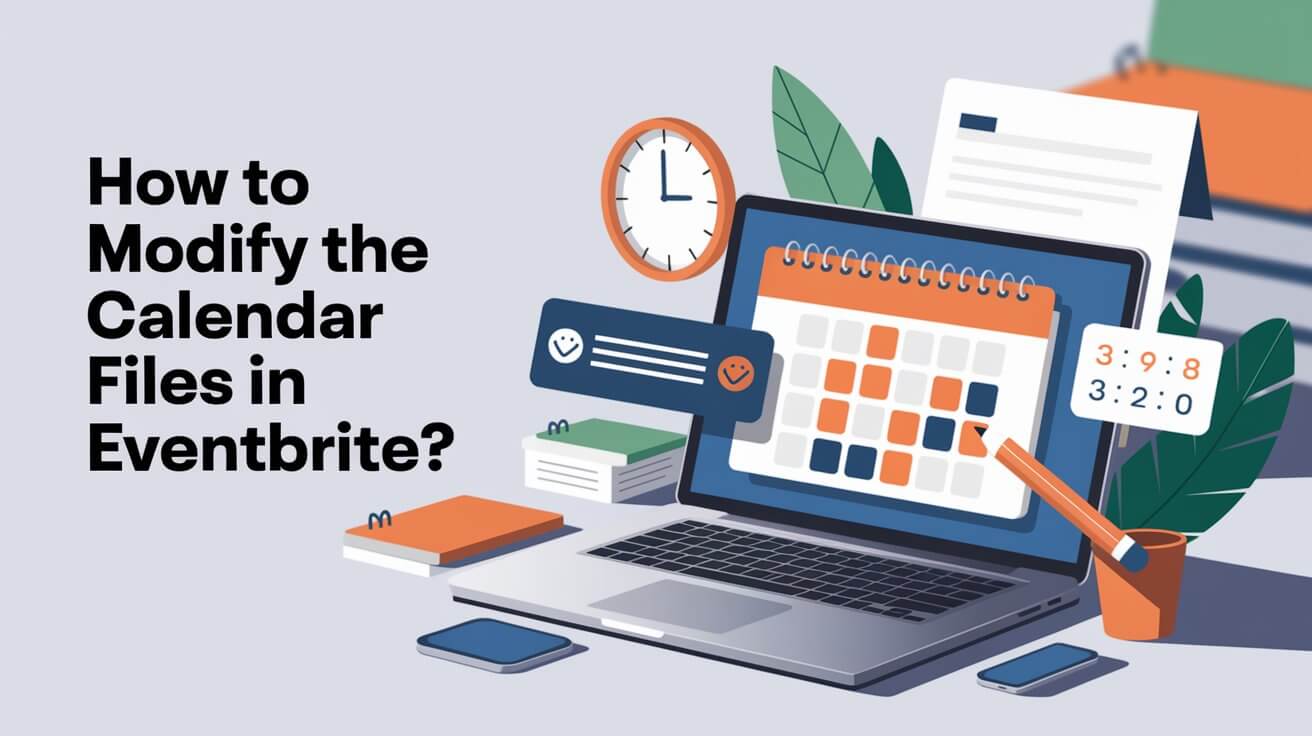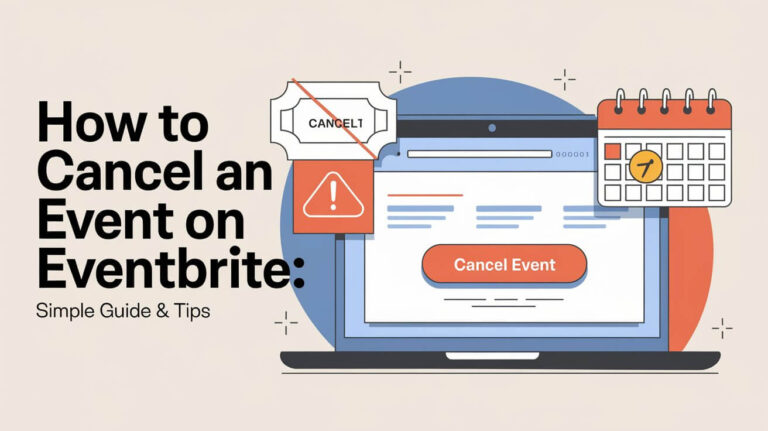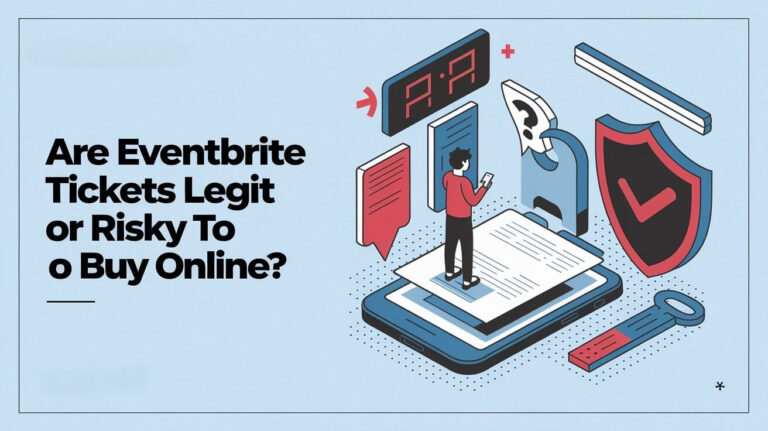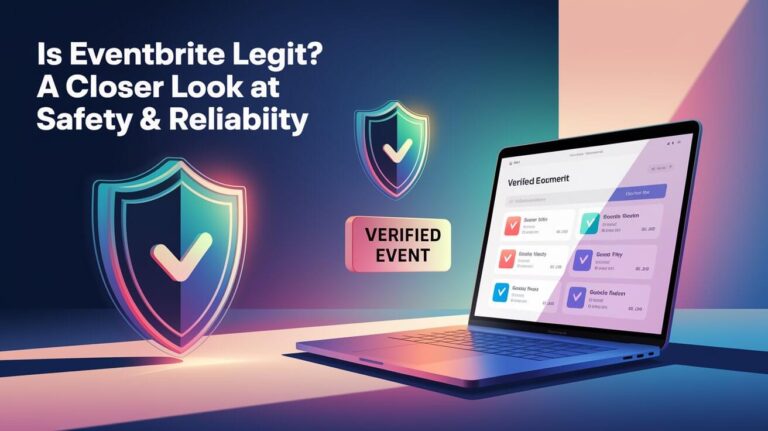
Changing Eventbrite calendar files is key to managing events well. It lets you adjust start and end dates of repeating events. This ensures your events are current and right on your Eventbrite calendar files.
This article will show you how to modify Eventbrite calendar files. You’ll learn about different techniques and best practices. It’s all about making your events shine on Eventbrite.
We’ll dive into the world of modifying calendar files. You’ll see why it’s important and the tools you can use. By the end, you’ll know how to manage your events with Eventbrite calendar files.
Calendar File Basics in Eventbrite
Knowing the basics of calendar files in Eventbrite is key for good event management. The format of the calendar file is very important. It decides how events are shown and organized. Eventbrite has many calendar file formats to choose from, so you can pick the best one for you.
Eventbrite lets you customize your default calendar settings. You can set the start and end dates, timezone, and how often events happen. This makes sure your events are just right for your needs.
Eventbrite makes it easy to manage your calendar files. You can find your files in the Eventbrite dashboard. They are kept safe and only people with the right permissions can see or change them.
Key Considerations for Calendar File Management
- Calendar file format: Choose a format that is compatible with your event management needs.
- Default calendar settings: Customize the settings to fit your specific requirements.
- File location and access: Ensure that your calendar files are stored in a secure location and access is controlled by permissions.
Understanding these key points helps you manage your calendar files well in Eventbrite. This ensures your events are well-organized and easy to find. Eventbrite offers tools and features to help with these important aspects.
Required Permissions for Calendar Modifications
To change calendar files in Eventbrite, you need the right permissions. These permissions decide what you can do with a calendar, like adding, editing, or deleting events. It’s important to control who can change the calendar to keep things organized.
There are different settings for calendar permissions. For example, event organizers can choose if guests can change the event. They can also set reminders and decide if the event is confirmed, tentative, or canceled.
Important things to think about when setting permissions include:
- Event visibility: Public, private, or default settings
- Guest modification permissions: Allow or restrict guests from making changes to the event
- Reminder settings: Specify the method and timing of reminders
Knowing what permissions you need and setting them up right helps event organizers manage their calendars well. This ensures all events are set up and run smoothly.
Accessing Your Event Calendar Database
To manage events well, you need to access your event calendar database. It’s important to know how to get direct access and navigate the backend. The database is key for all event data, making direct access a big help.
Understanding backend navigation and security is key. Good security keeps your database safe from unauthorized access. This protects your event data from breaches.
Direct Calendar Access Methods
There are many ways to access your calendar directly. You can use API connections or third-party integrations. These methods make managing events easier. They also help automate tasks, like syncing events across calendars.
Backend Navigation Steps
To navigate the backend, you need to know the system’s layout. This includes how to find event listings and attendee info. Following steps helps you manage and update your database easily.
Security Protocols
Strong security is essential for your database. Use secure login methods like two-factor authentication. Also, keep your system’s software and plugins updated. This keeps your database safe from unauthorized access.
| Security Protocol | Description |
|---|---|
| Two-Factor Authentication | Requires users to provide a second form of verification, such as a code sent to their phone, in addition to their password. |
| Regular Software Updates | Ensures that the system’s software and plugins are up-to-date, reducing the risk of security vulnerabilities. |
| Secure Data Storage | Protects event data by storing it in a secure and encrypted environment. |
How To Modify The Calendar Files In Eventbrite Platform
To change calendar files in Eventbrite, you first need to know the basics. The platform makes it easy to edit your events and schedules. This lets you update your events quickly.
Changing calendar files involves a few steps. First, you access your event calendar database. Then, you make the changes you need. Lastly, you save those changes. You can update event details, change dates, or add new events this way.
Modifying calendar files in Eventbrite has many benefits. For example:
- It makes managing your events easy. You can update details and schedules without hassle.
- It helps keep your events organized. This makes it simple to track and manage many events.
- It improves the user experience. Attendees get the latest and most accurate event information.
Following these steps and using Eventbrite’s features, you can manage your events well. Always save your changes. This keeps your calendar files current and accurate.
Time Zone Configuration Methods
Managing events well means setting up time zones correctly. This ensures everyone knows when to show up. You can adjust time zones manually or update many at once. This keeps everyone in sync, no matter where they are.
Manual Time Zone Adjustments
Adjusting time zones manually means picking the right one for each event. For example, New York events use America/New_York time. It’s simple but effective.
Bulk Calendar Updates
Bulk updates change many events at once. This is great for big events across different zones. It saves time and cuts down on mistakes.
| Time Zone | Example |
|---|---|
| America/New_York | Eastern Standard Time (EST) |
| Europe/Zurich | Central European Time (CET) |
| Asia/Hong_Kong | Hong Kong Time (HKT) |
Using these methods, you can schedule events right and help attendees plan. It makes for a better experience and avoids confusion.
Calendar Sync Options
Managing events is easier with the right calendar sync options. Digital calendars help keep you organized and on track. Syncing events across platforms ensures all calendars stay updated.
There are many calendar sync options, like Google Calendar, Outlook Calendar, Yahoo! Calendar, and iCal Calendar. Each has its own strengths and weaknesses. For instance, Google Calendar is popular for events but might not work well for recurring ones. Eventbrite, on the other hand, makes adding events to your calendar simple.
Some key options include: * Google Calendar: widely used but not ideal for recurring events * Outlook Calendar: perfect for business but limited for personal use * Yahoo! Calendar: popular but might have syncing issues * iCal Calendar: great for Apple users but not all devices * Eventbrite: easy to add events to your calendar
Knowing the different sync options helps users pick the best one for their needs. This ensures events are always up-to-date. With the right sync, staying organized and focused on events becomes easier.
| Calendar Sync Option | Benefits | Drawbacks |
|---|---|---|
| Google Calendar | Widely used, easy to use | May not be best for recurring events |
| Outlook Calendar | Great for business users | May have limitations for personal use |
| Yahoo! Calendar | Popular option | May have discrepancies with syncing times |
| iCal Calendar | Great for Apple users | May not be compatible with all devices |
| Eventbrite | Automatically generates “Add to my calendar” link | May have limitations for certain types of events |
Event Data Management Tools
Effective event data management is key to any event’s success. The right tools help event organizers manage data smoothly. They can track attendee info, ticket sales, and more.
These tools collect, store, and analyze event data. They have features like data import and export. Batch processing is also important for handling large datasets quickly.
Popular tools include Eventbrite and Zapier. Eventbrite offers many features for managing event data. Zapier helps automate data management. Trello and Asana also help with project management, useful for event data.
| Tool | Features |
|---|---|
| Eventbrite | Data import functions, export capabilities, batch processing |
| Zapier | Automation tools, data integration |
| Trello | Project management, task assignment |
| Asana | Project management, task assignment, automation |
Custom Calendar Formatting
Custom calendar formatting lets you personalize your calendar. You can pick from different layouts and loop files to make your events stand out. The layout file is a must, and without it, your custom layout won’t work. It should start with “layout_” followed by your template name.
The loop file is also needed, and it should be named “loop_” followed by your template name. It’s essential for showing each event. The parts folder has files like availability.php and date.php. You only need to create them if you want to make changes. There are 15 part files available, including header.php and location.php.
| File Type | Required | Description |
|---|---|---|
| Layout | Yes | Required for custom layout |
| Loop | Yes | Required for each event display |
| Parts | No | Optional files for custom formatting |
Custom calendar formatting gives you the freedom to make your calendar unique. You can change any file, like layouts and loops. The data structure is based on the $data->events object. This lets you loop through event data to personalize your calendar.
Recurring Event Modifications
Managing events on Eventbrite means knowing about recurring event changes. You can set up events to happen at the same time over and over. This makes it easy to handle many events at once.
Pattern settings help you decide how often and for how long your events will happen. For example, you can make an event happen every week for a certain number of weeks or months. Exception handling lets you change specific events in a series if needed. But, you can only make changes if no tickets have been sold for those dates.
Pattern Settings Options
- Daily: Repeat an event every day for a specified number of days
- Weekly: Repeat an event every week for a specified number of weeks
- Monthly: Repeat an event every month for a specified number of months
- Custom: Create a custom recurring pattern to suit your event needs
Using recurring event changes makes managing your events easier. It also helps you give your attendees a better experience. Plus, it’s easier to keep track of all your events and who’s coming.
| Recurring Pattern | Maximum Duration |
|---|---|
| Daily | 60 months (5 years) |
| Weekly | 60 months (5 years) |
| Monthly | 60 months (5 years) |
Recurring event changes help you manage complex schedules easily. They ensure your events run smoothly. Whether it’s one event or many, knowing about pattern settings and exception handling is key to success.
Calendar Integration Solutions
Managing events well means having a smooth calendar integration. Calendar integration solutions provide tools and services to make event management easier. They help event organizers automate tasks, sync events, and boost productivity.
Calendar integration solutions connect with many apps and services. For example, Eventbrite works with Google Calendar for better event planning. Zapier also helps by automating workflows, keeping events and attendee info in sync across platforms.
Streamlining Event Management
Calendar integration solutions make event management smoother in several ways:
- They automate tasks like backing up attendee lists.
- They sync events and attendee details across different platforms.
- They help keep consistent communication with attendees before, during, and after events.
Using these solutions, event organizers save time and reduce manual work. They can focus on creating great events. With over 7,000 apps available for integration with Eventbrite via Zapier, the options are vast. Whether it’s linking with email marketing tools or syncing with Google Calendar, these solutions are essential for efficient event management.
Troubleshooting Calendar Issues
Dealing with calendar issues can be tough. It’s key to know the common problems and how to fix them. Troubleshooting calendar issues requires a smart approach to solve them quickly. Issues can stem from plugin or theme conflicts, wrong settings, or system bugs.
To troubleshoot, try switching to a default theme and disabling all plugins. Also, use Google Chrome Developer Tools to find console errors. Turning on WP_DEBUG and WP_DEBUG_LOG can help find debug messages. Always make a backup before making changes to your site.
- Check for conflicts with plugins or themes
- Verify calendar settings and configurations
- Enable WP_DEBUG and WP_DEBUG_LOG to capture debug messages
- Create restorable backups before making site modifications
Following these steps, you can find and fix calendar problems. This ensures your events are shown correctly. Always focus on fixing calendar issues to keep your events running smoothly.
| Troubleshooting Step | Description |
|---|---|
| Switch to default theme | Helps identify theme-related issues |
| Deactivate all plugins | Helps identify plugin-related issues |
| Check for console errors | Helps identify JavaScript-related issues |
Final Note
This article has given you a detailed guide on how to change calendar files in Eventbrite. We covered everything from basic file formats to customizing time zones. You now know how to make your event calendar better.
Whether you’re experienced or new to Eventbrite, you can now manage your calendar better. The tips here will help you give your attendees a great experience. Always keep up with new Eventbrite features and improve your calendar management.
Keep improving your Eventbrite presence by using all the resources available. Join the Eventbrite community too. With the right tools and knowledge, you can make your events even better.






